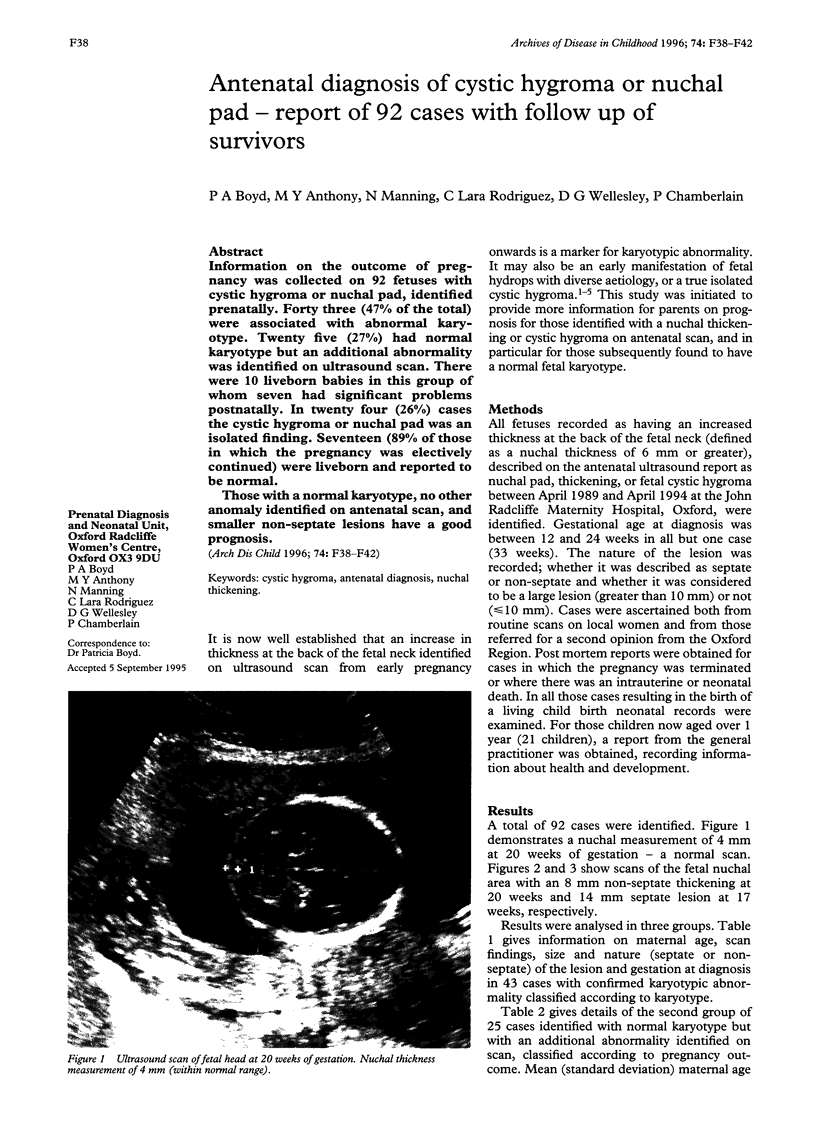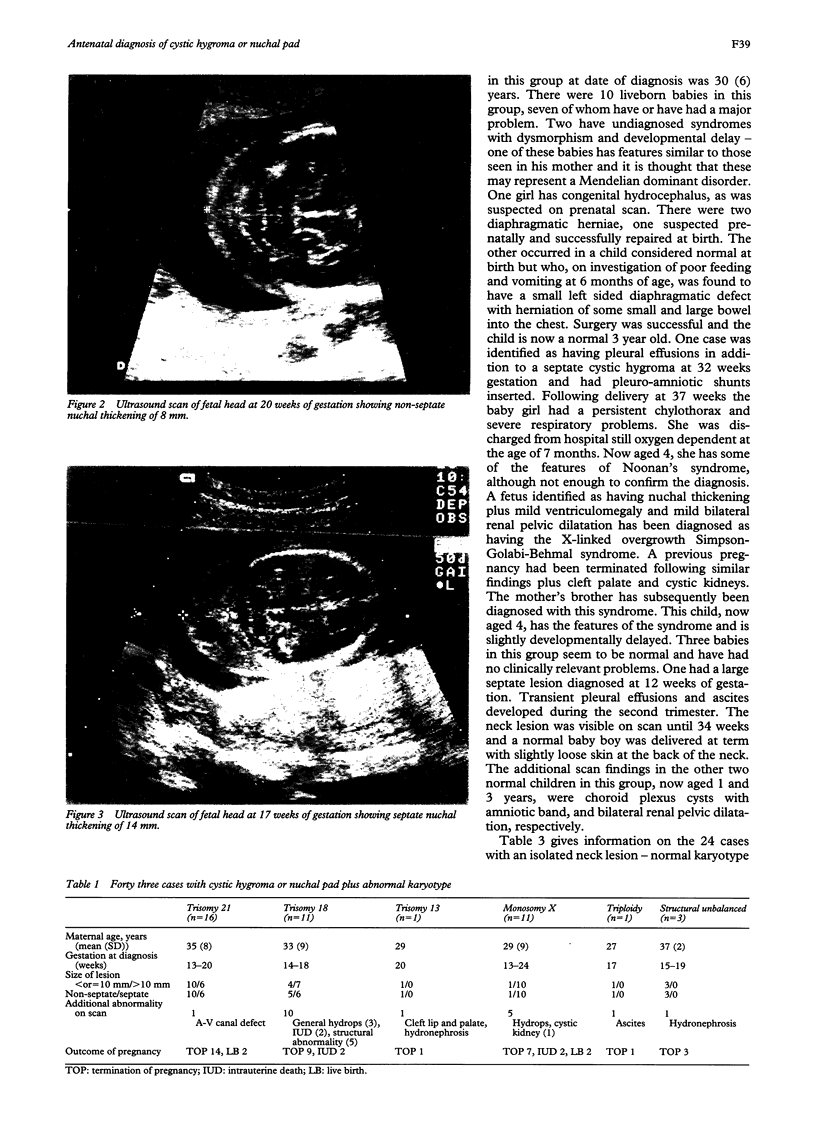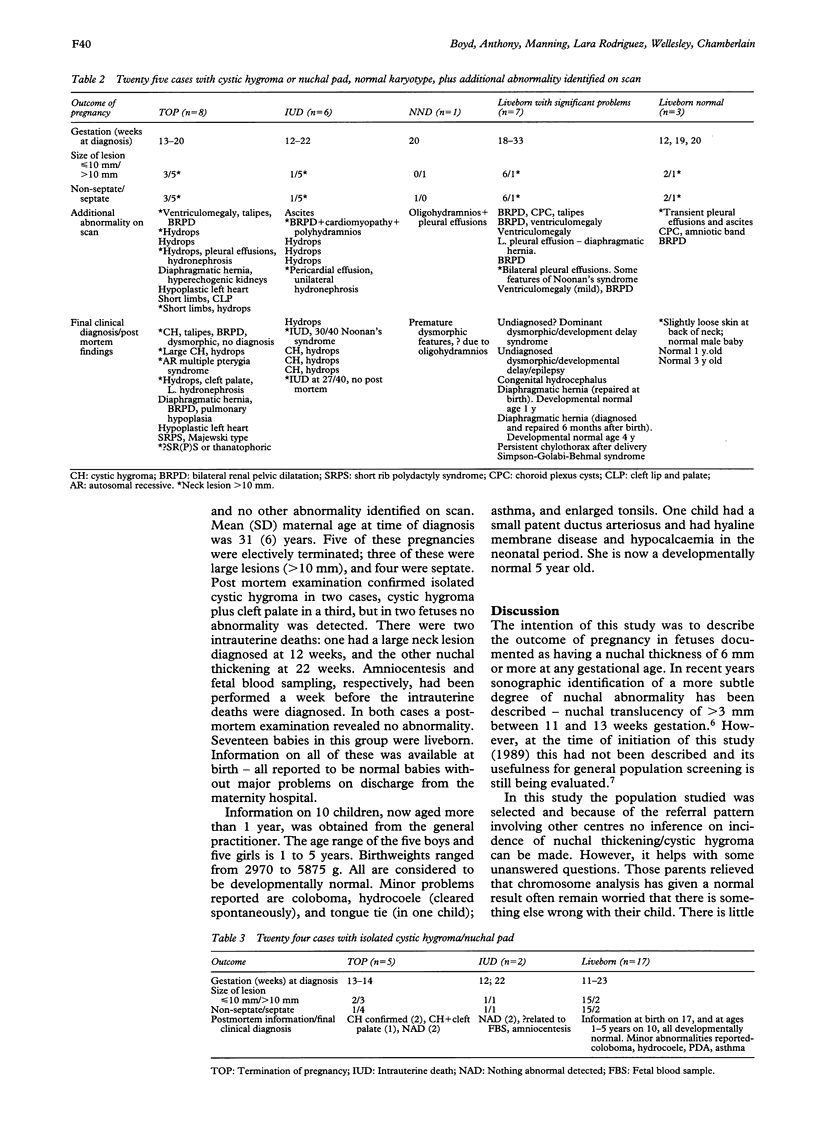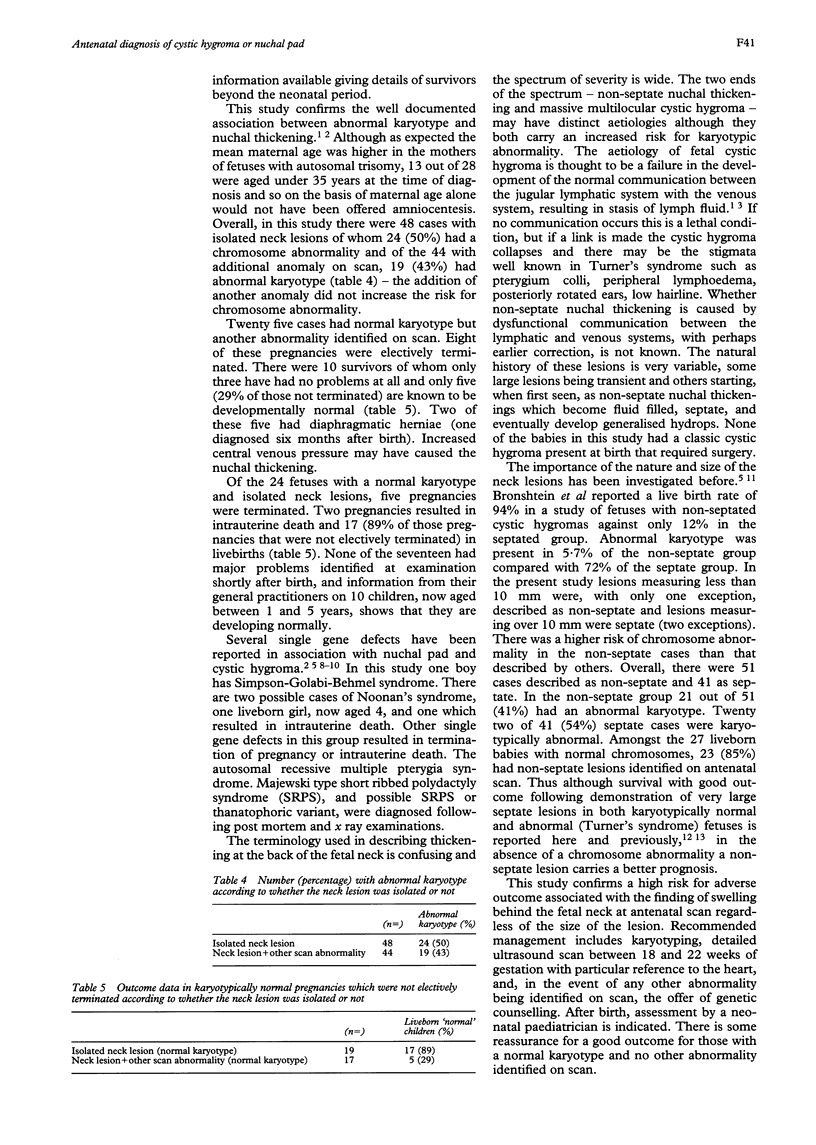Abstract
Information on the outcome of pregnancy was collected on 92 fetuses with cystic hygroma or nuchal pad, identified prenatally. Forty three (47% of the total) were associated with abnormal karyotype. Twenty five (27%) had normal karyotype but an additional abnormality was identified on ultrasound scan. There were 10 liveborn babies in this group of whom seven had significant problems postnatally. In twenty four (26%) cases the cystic hygroma or nuchal pad was an isolated finding. Seventeen (89% of those in which the pregnancy was electively continued) were liveborn and reported to be normal. Those with a normal karyotype, no other anomaly identified on antenatal scan, and smaller non-septate lesions have a good prognosis.
Full text
PDF




Images in this article
Selected References
These references are in PubMed. This may not be the complete list of references from this article.
- Bewley S., Roberts L. J., Mackinson A. M., Rodeck C. H. First trimester fetal nuchal translucency: problems with screening the general population. 2. Br J Obstet Gynaecol. 1995 May;102(5):386–388. doi: 10.1111/j.1471-0528.1995.tb11290.x. [DOI] [PubMed] [Google Scholar]
- Bronshtein M., Bar-Hava I., Blumenfeld I., Bejar J., Toder V., Blumenfeld Z. The difference between septated and nonseptated nuchal cystic hygroma in the early second trimester. Obstet Gynecol. 1993 May;81(5 ):683–687. [PubMed] [Google Scholar]
- Bulas D. I., Saal H. M., Allen J. F., Kapur S., Nies B. M., Newman K. Cystic hygroma and congenital diaphragmatic hernia: early prenatal sonographic evaluation of Fryns' syndrome. Prenat Diagn. 1992 Nov;12(11):867–875. doi: 10.1002/pd.1970121104. [DOI] [PubMed] [Google Scholar]
- Chervenak F. A., Isaacson G., Blakemore K. J., Breg W. R., Hobbins J. C., Berkowitz R. L., Tortora M., Mayden K., Mahoney M. J. Fetal cystic hygroma. Cause and natural history. N Engl J Med. 1983 Oct 6;309(14):822–825. doi: 10.1056/NEJM198310063091403. [DOI] [PubMed] [Google Scholar]
- Chodirker B. N., Harman C. R., Greenberg C. R. Spontaneous resolution of a cystic hygroma in a fetus with Turner syndrome. Prenat Diagn. 1988 May;8(4):291–296. doi: 10.1002/pd.1970080408. [DOI] [PubMed] [Google Scholar]
- Graham J. M., Jr, Stephens T. D., Shepard T. H. Nuchal cystic hygroma in a fetus with presumed Roberts syndrome. Am J Med Genet. 1983 May;15(1):163–167. doi: 10.1002/ajmg.1320150126. [DOI] [PubMed] [Google Scholar]
- Kalousek D. K., Seller M. J. Differential diagnosis of posterior cervical hygroma in previable fetuses. Am J Med Genet Suppl. 1987;3:83–92. doi: 10.1002/ajmg.1320280511. [DOI] [PubMed] [Google Scholar]
- Nicolaides K. H., Azar G., Byrne D., Mansur C., Marks K. Fetal nuchal translucency: ultrasound screening for chromosomal defects in first trimester of pregnancy. BMJ. 1992 Apr 4;304(6831):867–869. doi: 10.1136/bmj.304.6831.867. [DOI] [PMC free article] [PubMed] [Google Scholar]
- Thomas R. L. Prenatal diagnosis of giant cystic hygroma: prognosis, counselling, and management; case presentation and review of the recent literature. Prenat Diagn. 1992 Nov;12(11):919–923. doi: 10.1002/pd.1970121111. [DOI] [PubMed] [Google Scholar]
- Wilson R. D., Venir N., Farquharson D. F. Fetal nuchal fluid--physiological or pathological?--In pregnancies less than 17 menstrual weeks. Prenat Diagn. 1992 Sep;12(9):755–763. doi: 10.1002/pd.1970120908. [DOI] [PubMed] [Google Scholar]





